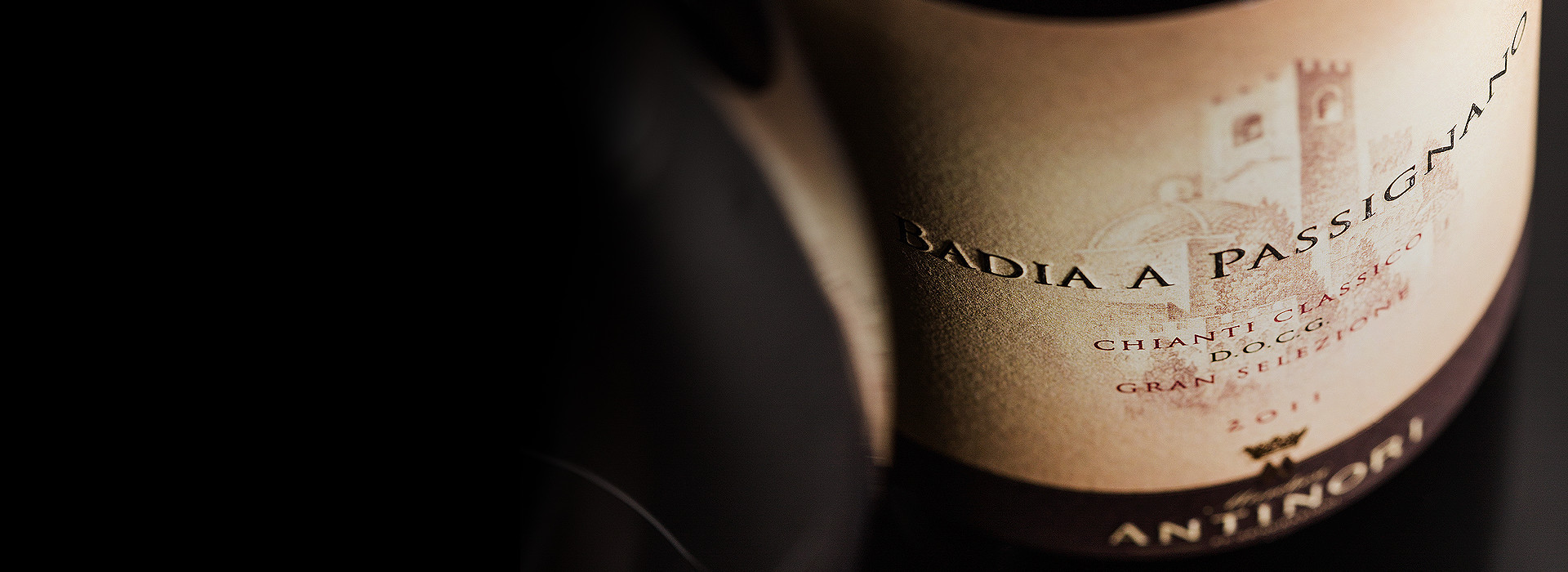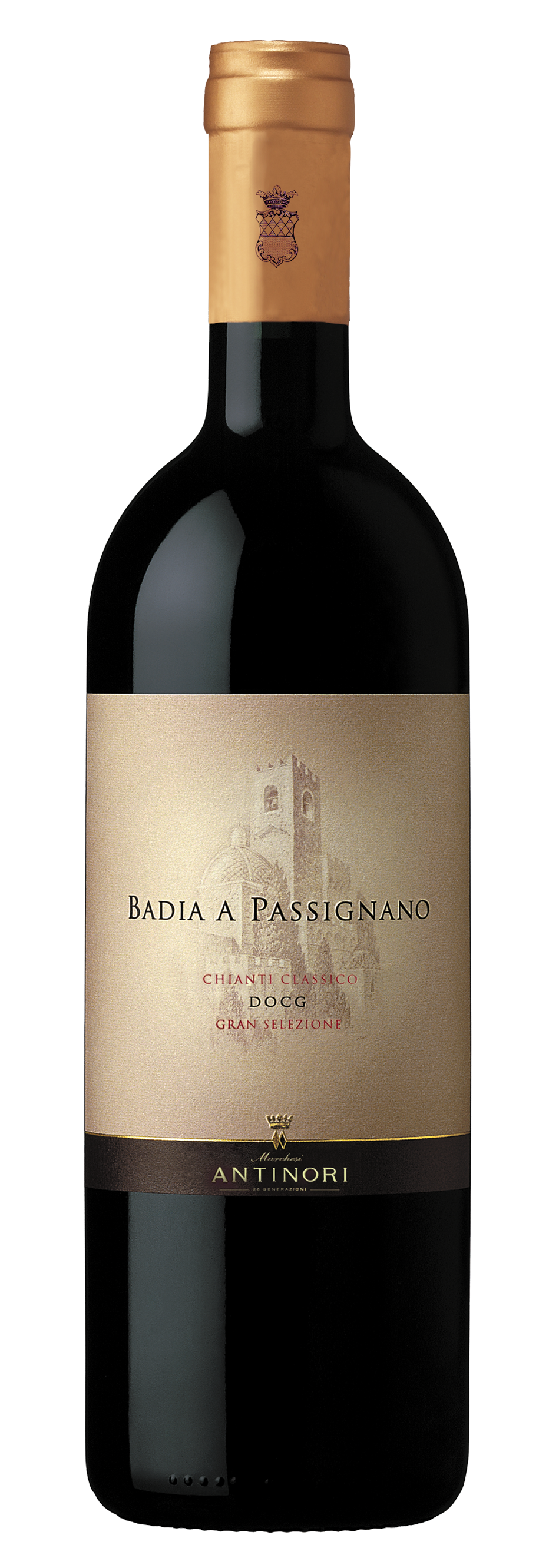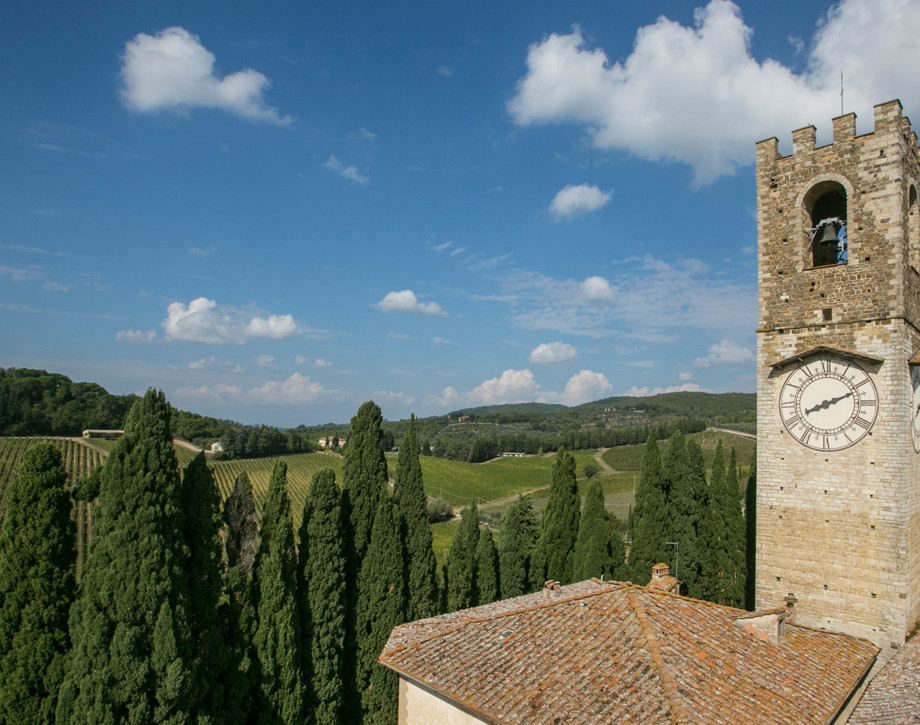Badia a Passignano

Climate
Autumn of 2009 and the following winter of 2010 were characterized by rain and low temperatures. Snow fell towards the end of 2009 and continued at intervals until mid-March. The weather assured an excellent period of repose for the vines which, together with the abundant precipitations of early spring, significantly delayed bud burst compared to the normal seasonal period. The months of April, May, and June, of crucial importance for vine growth and development, were characterized by high rainfall and lower than average temperatures, leading to a delay in the vine cycle which involved all grape varieties. The summer, warm in temperature and dry in climate, contributed to an excellent development of the grape bunches and a significant recovery of lost time in vine growth. Climatic conditions changed once again towards the end of July and during the first half of August with the arrival of rather low temperatures for the season and light rainfall which, together, slowed the color change of the grapes. September alternated warm, sunny, and breezy days with occasional rain which, fortunately, was regularly followed by north winds which rapidly dried the grapes and adjusted the micro-climate of the vineyards. Cool nights and warm daytime temperatures led to an optimal physiological ripening of the Sangiovese grapes, and picking, which began towards the end of September, was concluded around the 10th of October.
Vinification
The unusual climatic conditions of the vintage made a careful process of selection in every phase of the production process an indispensable necessity. Upon their arrival at the cellars, the grapes, after a delicate destemming, were manually selected on the sorting table to guarantee a product of the highest quality. This operation was of fundamental important in realizing the full potential of the crop during the elaboration of the musts. The fermentation lasted ten days and, after finishing their sugars, the grapes remained on their skins for an additional ten to twelve days. After being run off its skins, the wine went into Hungarian, and partly French, oak barrels where it went through a complete malolactic fermentation by the end of the year. After racking, the various lots, still kept separate on the basis of the various vineyard parcels of origin, were aged for fourteen months in 60 and 80 gallon Hungarian, and, again, partly French, oak barrels. During this phase, the various lots were constantly tasted and controlled in order to maximize the benefits of the aging process. The lots were then blended together and bottled at the end of the aging period. A further twelve month period of bottle aging concluded the winemaking process.
Historical data
Badia a Passignano Gran Selezione is produced exclusively from the finest Sangiovese grapes harvested from its namesake vineyard located in the heart of the Chianti Classico region. The region has been respected and appreciated for its outstanding wine production since the year 1000. The vineyards grow at an altitude of approximately 300 meters (984 feet) above sea level on soils rich in limestone with a fair amount of clay. The wine is aged in the historic cellars under the Badia (abbey) of Passignano that dates back to the 10th century.
Tasting Notes
An intense ruby red in color, the wine shows aromas of ripe fruit, at times of maximum ripeness, but with a total respect for the grape variety and an excellently maintained freshness. The notes of the fruit and of the oak fuse in harmonious balance with minty balsamic notes and suggestions of graphite. The rich palate, with supple and balanced tannins, is vibrant and fully expressive of Sangiovese. The length, persistence, and aftertaste are of notable importance and echo the fruit first felt on the nose.
Awards
Antonio Galloni 93/100 USA James Suckling 93/100 USA Wine Advocate USA 92+/100 Wine Enthusiast 94/100 USA Wine Spectator 92/100 USA

The Wine
Badia a Passignano Gran Selezione is produced exclusively from the finest Sangiovese grapes harvested from its namesake vineyard located in the heart of the Chianti Classico region. The region has been respected and appreciated for its outstanding wine production since the year 1000. The vineyards grow at an altitude of approximately 300 meters (984 feet) above sea level on soils rich in limestone with a fair amount of clay. The wine is aged in the historic cellars under the Badia (abbey) of Passignano that dates back to the 10th century.

Climate
Autumn of 2009 and the following winter of 2010 were characterized by rain and low temperatures. Snow fell towards the end of 2009 and continued at intervals until mid-March. The weather assured an excellent period of repose for the vines which, together with the abundant precipitations of early spring, significantly delayed bud burst compared to the normal seasonal period. The months of April, May, and June, of crucial importance for vine growth and development, were characterized by high rainfall and lower than average temperatures, leading to a delay in the vine cycle which involved all grape varieties. The summer, warm in temperature and dry in climate, contributed to an excellent development of the grape bunches and a significant recovery of lost time in vine growth. Climatic conditions changed once again towards the end of July and during the first half of August with the arrival of rather low temperatures for the season and light rainfall which, together, slowed the color change of the grapes. September alternated warm, sunny, and breezy days with occasional rain which, fortunately, was regularly followed by north winds which rapidly dried the grapes and adjusted the micro-climate of the vineyards. Cool nights and warm daytime temperatures led to an optimal physiological ripening of the Sangiovese grapes, and picking, which began towards the end of September, was concluded around the 10th of October.
Vinification
The unusual climatic conditions of the vintage made a careful process of selection in every phase of the production process an indispensable necessity. Upon their arrival at the cellars, the grapes, after a delicate destemming, were manually selected on the sorting table to guarantee a product of the highest quality. This operation was of fundamental important in realizing the full potential of the crop during the elaboration of the musts. The fermentation lasted ten days and, after finishing their sugars, the grapes remained on their skins for an additional ten to twelve days. After being run off its skins, the wine went into Hungarian, and partly French, oak barrels where it went through a complete malolactic fermentation by the end of the year. After racking, the various lots, still kept separate on the basis of the various vineyard parcels of origin, were aged for fourteen months in 60 and 80 gallon Hungarian, and, again, partly French, oak barrels. During this phase, the various lots were constantly tasted and controlled in order to maximize the benefits of the aging process. The lots were then blended together and bottled at the end of the aging period. A further twelve month period of bottle aging concluded the winemaking process.
Historical data
Badia a Passignano Gran Selezione is produced exclusively from the finest Sangiovese grapes harvested from its namesake vineyard located in the heart of the Chianti Classico region. The region has been respected and appreciated for its outstanding wine production since the year 1000. The vineyards grow at an altitude of approximately 300 meters (984 feet) above sea level on soils rich in limestone with a fair amount of clay. The wine is aged in the historic cellars under the Badia (abbey) of Passignano that dates back to the 10th century.
Tasting Notes
An intense ruby red in color, the wine shows aromas of ripe fruit, at times of maximum ripeness, but with a total respect for the grape variety and an excellently maintained freshness. The notes of the fruit and of the oak fuse in harmonious balance with minty balsamic notes and suggestions of graphite. The rich palate, with supple and balanced tannins, is vibrant and fully expressive of Sangiovese. The length, persistence, and aftertaste are of notable importance and echo the fruit first felt on the nose.
Awards
Antonio Galloni 93/100 USA James Suckling 93/100 USA Wine Advocate USA 92+/100 Wine Enthusiast 94/100 USA Wine Spectator 92/100 USA

Badia a Passignano
Badia a Passignano is located above the town of Sambuca Val di Pesa, just 3 kilometers south of the Tenuta Tignanello estate. The property extends over an area of 223 hectares (551 acres), of which 65 hectares (160 acres) are planted with vines. The vineyards grow at an altitude that varies between 250 meters (820 feet) and 300 meters (984 feet) above seal level on calcareous soil in one of the most naturally endowed and beautiful environments in the Chianti Classico region. The estate’s historical importance in the Chianti region is well documented in hundreds of volumes that are kept in the Florence State Archives that provide descriptions and details about the Sangiovese vineyards and local crops over the centuries. Further proof of this came to light in 1983 when a thousand year old vitis vinifera plant was discovered on the land surrounding Badia a Passignano.

Soil
Predominantly calcareous
















